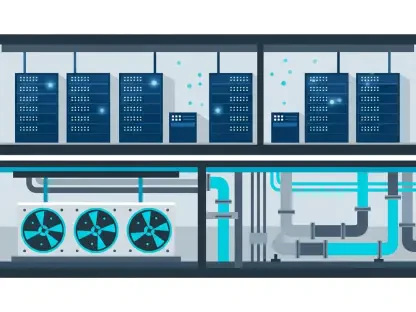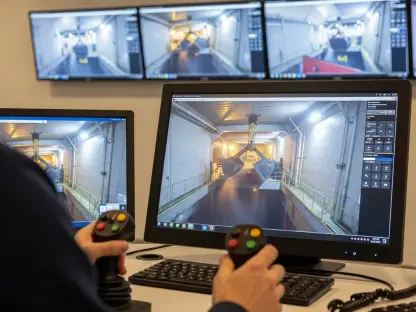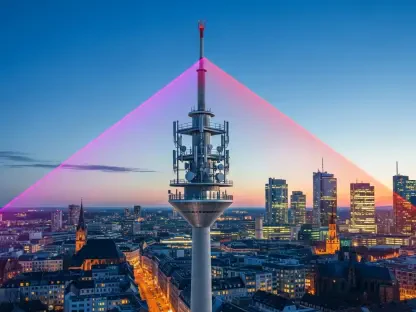Short Introduction
I’m thrilled to sit down with Vladislav Zaimov, a seasoned telecommunications specialist with deep expertise in enterprise networks and risk management. Today, we’re diving into LG CNS’s groundbreaking $72 million AI Data Hub project in Jakarta, Indonesia. As Korea’s first overseas AI data center, this initiative promises to reshape the digital landscape in Southeast Asia. We’ll explore why Jakarta was chosen, the innovative technologies behind the project, and how sustainability and strategic partnerships play a pivotal role in its success. Let’s get started!
Can you walk us through what inspired LG CNS to build Korea’s first overseas AI data center in Jakarta?
I think the inspiration came from recognizing the immense growth potential in Southeast Asia’s digital economy. Jakarta stood out as a prime location due to its rapidly expanding tech ecosystem and status as a central hub for business in the region. The city’s large population and increasing demand for cloud and AI services made it a natural fit. Beyond that, this project aligns with LG’s broader vision to establish a strong foothold in the region, paving the way for further expansion into markets like Singapore and Malaysia.
What made Jakarta the top choice over other cities in Southeast Asia for this project?
Jakarta’s strategic advantages really set it apart. Its central location in Indonesia, which is the largest economy in Southeast Asia, offers access to a massive market. Additionally, the Menteng area, where the center is being built, provides proximity to critical national infrastructure and submarine cables, ensuring robust connectivity. The city’s growing status as a digital hub also means there’s a strong talent pool and governmental support for tech initiatives, which made it a more attractive option compared to other regional cities.
How significant is the partnership with Sinar Mas, Indonesia’s third-largest conglomerate, for this data center?
Partnering with Sinar Mas is a game-changer. Their deep-rooted presence in Indonesia brings invaluable local expertise and resources to the table. This collaboration ensures smoother navigation of regulatory landscapes and access to established networks, which are critical for a project of this scale. Sinar Mas’s involvement also boosts credibility and trust among local stakeholders, making the data center a more appealing option for potential tenants and investors.
Can you paint a picture of the scale of this AI data center and what it means for the region?
Absolutely. This facility spans 11 stories and will house over 100,000 servers, which is massive by any standard. Starting with a 30 MW power capacity that can scale up to 220 MW, it’s positioned to be one of the largest and most powerful data centers in Indonesia. This scale not only meets the growing demand for AI and cloud computing in the region but also establishes Jakarta as a serious contender for a regional digital hub, attracting global tech players and fostering innovation.
What role does the “One LG” approach play in the design and operation of this data center?
The “One LG” approach is all about synergy. It integrates cutting-edge technologies from various LG subsidiaries, like advanced cooling systems and battery solutions, into a cohesive setup. This unified strategy ensures that every component is optimized to work together, enhancing efficiency and reliability. It also allows for faster innovation, as different arms of LG can collaborate seamlessly to address challenges specific to AI workloads, ultimately delivering a more robust and future-ready facility.
Sustainability is a big focus with the hybrid cooling systems. Can you explain how these systems work and their impact?
Sure, the hybrid cooling systems are designed to balance the intense performance needs of AI applications with energy efficiency. They combine traditional cooling methods with innovative approaches to minimize power consumption while maintaining optimal temperatures for the servers. This not only reduces operational costs but also significantly lowers the environmental footprint of the data center. It’s a critical step toward sustainable infrastructure, especially in a region where energy demands are soaring.
How does network neutrality factor into the appeal of this data center for potential tenants?
Network neutrality is a huge draw. It means tenants have the freedom to choose their own telecom providers rather than being locked into a single option. This flexibility is crucial for businesses that rely on specific network performance or have existing provider relationships. By offering this choice, the data center becomes more attractive to a wider range of clients, from startups to multinational corporations, fostering a more competitive and dynamic environment within the facility.
What’s your forecast for the future of AI-driven data centers in Southeast Asia?
I’m incredibly optimistic about the future. Southeast Asia is on the cusp of a digital revolution, with increasing adoption of AI and cloud technologies across industries. Data centers like the one in Jakarta will be the backbone of this transformation, driving innovation in everything from e-commerce to smart cities. I expect we’ll see more investments in similar projects, with a strong emphasis on sustainability and scalability, as the region cements its place as a global tech powerhouse over the next decade.









